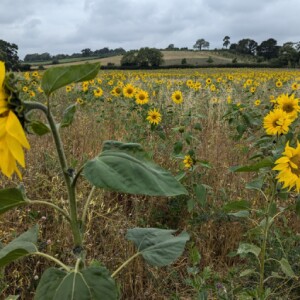Roads Not Taken
It seems a long time since the pandemic, when one of the only six reasons you might leave your home at all was
"exercise with your household (or support bubble) or one other person, this should be limited to once per day, and you should not travel outside your local area."
A long time and a long way, emotionally, politically, mentally. I can see more clearly now what I exasperatedly could not see then: why a prime minister - especially one with libertarian prejudices - might have hesitated to call a lockdown, unable to get past the fear that "The British will never stand for this". I look back now with some disbelief that such a momentous thing happened so quickly, so efficiently and effectively
I think we still have not properly processed that, or indeed the entire Covid experience, as a nation. We have not had a collective national act of remembrance for all those who died so horribly, or to acknowledge the trauma of those who cared for them. I sometimes think we have even connived with our politicians in a collective forgetting. Will we tell our children and grandchildren about 'what we did in the pandemic', in the way that my parents and grandparents told me stories of the war years? I don't think we have written it into our life stories in the same way
Permitted exercise in an area like this led to very well-walked footpaths. Today, we followed one of the obvious circular routes from our end of the village: about an hour to the next valley and the best cafe in the area; a slightly more roundabout return to cross 'the hare field' - an area of open farmland where they are common, and we were rewarded with three or four today. Swallows, buzzards, charming summer-cum-autumn views, comfortable smells of harvest and late hay
But we did not meet a soul, and had to fight our way through overgrown sections of path and stiles, circumvent two-metre-high maize through which no path had been cut or worn, negotiate bramble and nettle that encroach on the route. We enjoyed the minor frisson of adventure, but it shows that lockdown habits have not endured for most people
The picture is just one field on the route, sown with a pollinators mix: sunflower, obviously; white clover; crimson clover, all present. The blue flowers are Echium - a cultivated version of Viper's Bugloss, that is a firm favourite with bees. Elsewhere there was Phacelia and a range of different beans and vetches. This treasure trove, exactly a kilometer from our bees, may well be part of the reason for their generous honey yield. We have sent honey for analysis of the flowers that contributed to it. Turnaround is very slow, but one day we will know


Comments
Sign in or get an account to comment.


